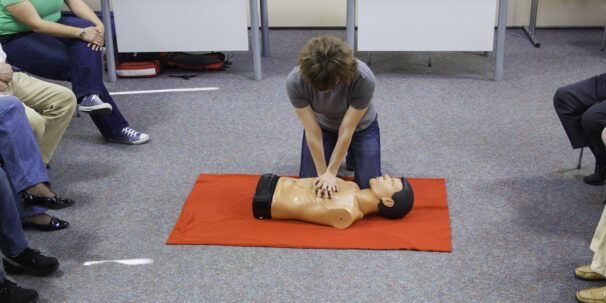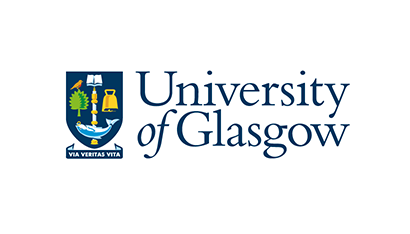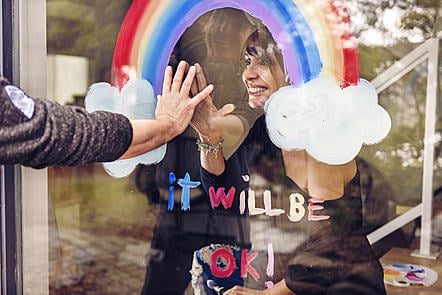Where to learn CPR: Find a first aid course
Learning CPR can make a significant difference in the case of an emergency but where do you start? See our recommendations for learning this life-saving skill.

Whether it’s for the workplace or everyday living, learning how to perform CPR and first aid is a vital life lesson that can help to save someone in an emergency situation.
In the UK, there are over 30,000 out-of-hospital cardiac arrests a year, but unfortunately, the survival rate is less than one in 10 people. This outlines the importance of CPR and how it can help you improve those numbers and ensure you’re ready to react quickly and effectively in an emergency.
In this article, we will discuss what CPR is and why it’s important before exploring where to learn CPR. We’ll explore CPR training and share some information about potential first aid courses you can enrol in. If you want to learn about the true value of CPR courses and how to get involved, you’ve come to the right place.
What is CPR?
Cardiopulmonary resuscitation (CPR) can help to save an individual’s life by restarting their heart when under cardiac arrest. If someone’s heart is unable to pump blood and they’ve stopped breathing, or if they’re a child or infant not breathing normally, then performing CPR could dramatically improve their chances of survival.
This is done by using your hands to carry out chest compressions, which help to assist the flow of blood to important organs in the body. By using the recommended technique, you should be able to keep someone alive until a regular heartbeat returns or the emergency services arrive.
Note: Take a look at our other CPR article for more information on how to carry out CPR.




Why it’s important to learn CPR
While the thought of learning CPR can be daunting, the technique is actually relatively easy to perform and anybody is capable of doing it.
According to Resuscitation Council UK, for every minute that a person in cardiac arrest doesn’t receive CPR and defibrillation, their chance of survival drops by up to 10%. Performing CPR in these initial stages is absolutely vital and helps to keep the person alive before the emergency services arrive.
A cardiac arrest can happen to anyone at any time, so knowing how to perform CPR is important no matter the environment you’re in – at home, in the workplace, or in a public setting. Once you’ve obtained the skills and knowledge to use CPR, you’ve learned a skill for life that can make a massive difference.
The best way to learn CPR is by taking part in CPR courses, as you’ll be taught by a professional and get to ask questions along the way. While a lot of first aid courses are carried out in person, you also have the option of completing online first aid courses if you don’t feel comfortable doing it face-to-face, or are unable to attend in-person sessions.
In 2018, 59% of members of the public reported having received training in CPR, so now is the time to consider signing up for relevant first aid courses.
You might need to perform CPR if someone:
- Collapses
- Isn’t breathing
- Has been involved in an accident
- Doesn’t respond
- Is suffering cardiac arrest
- Doesn’t have a pulse.
Uses for CPR training: first aid courses
CPR courses come in handy in a range of different environments. In this section, we will look at the different types of first aid courses that incorporate CPR and BLS (Basic Life Support) training that can help to broaden your life-saving skills and knowledge.
Before we get into the more specific courses, a great introduction to first aid can be found in our Basic First Aid: How to Be an Everyday Hero course by the University of Glasgow.
First aid at work
15% of cardiac arrests in the UK happen in the workplace, which is why it’s important to have people on site that are first aid trained and have completed a CPR course. Courses can be tailored to organisations of various sizes and cover just about every sector imaginable.
Staff safety is paramount in a workplace environment, which is why first aid training should be high on the priority list for any business. No matter the job role or the profession, you never know when emergency care will be required. Even just knowing the basics can have a huge impact on whether someone lives or dies.
In fact, workplaces with significant health and safety risks are legally obliged to have a trained first-aider. Low-risk workplaces, such as small offices, are required to have a first-aid box and a person in charge of first-aid arrangements.
Where to learn CPR for work
First aid for the public
The vast majority of cardiac arrests happen in the home (72%). Whether an emergency occurs in a home or in a public place, having the confidence to perform CPR and other first aid care is incredibly useful.
If a family member, friend, or housemate suddenly required emergency care, you’d like to think that you’d be able to do everything in your power to help them until professional help arrives.
That’s why first aid courses for the public, both individuals and community groups, are definitely worth considering so you can be ready when called into action.
Where to learn CPR for public spaces




First aid for groups
First aid for groups is important anywhere that offers a public service, whether that’s a leisure centre, school, or hotel. It may be the case that only a small group within an organisation requires first aid training, rather than the whole workplace.
Equally, you may want to enrol on a CPR course with a group of friends or as a family, especially if you know someone who may be vulnerable to cardiac arrests.
Whatever the reason, group learning is a great way of coming together and learning a new skill.
Where to learn CPR for groups
Mental health and wellbeing courses
Closely linked to first aid and CPR training, mental health and wellbeing courses are designed to help both teams and individuals build resilience. The link between health issues and mental wellbeing is well documented, which means that awareness of both elements is helpful when giving emergency care.
Mental health is now a pivotal part of many first aid courses, with a strong focus on ensuring people in a working environment and in everyday life maintain a state of positive mental wellbeing.
At FutureLearn, we offer a variety of mental health and wellbeing courses that explore this important topic area in great detail, helping to expand your current skill set and improve your knowledge.
Check out these courses:
- Psychological First Aid: Supporting Children and Young People by the UK Health Security Agency
- Personal Trainer’s Toolkit: Mental Health First Aid for Fitness Trainers by Central Queensland University
- Youth Mental Health: Supporting Young People Using a Trauma Informed Practice by the Mental Health Foundation
- Psychology and Mental Health: Beyond Nature and Nurture by the University of Liverpool
- Understanding Mental Health: Continuum, Culture and Social Media by Anglia Ruskin University
- Digital Wellbeing by the University of York.
First aid courses on FutureLearn
Having read this article, you should now know a bit more about where to learn CPR and why it’s important to do so. Our different online first aid courses act as a great starting point, and we’ve also listed a combination of in-person and online first aid courses throughout this article.
Make a positive difference by taking a CPR course today – you’ll ensure you’re able to react to an emergency situation and provide sufficient care.






